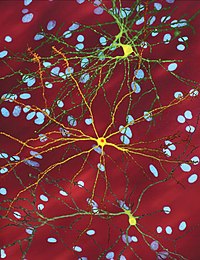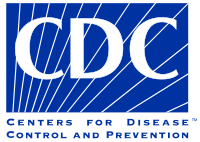
Next‐generation disease modeling with direct conversion: a new path to old neurons
Sign Up to like & getrecommendations! Published in 2019 at "Febs Letters"
DOI: 10.1002/1873-3468.13678
Abstract: Within just over a decade, human reprogramming‐based disease modeling has developed from a rather outlandish idea into an essential part of disease research. While iPSCs are a valuable tool for modeling developmental and monogenetic disorders,… read more here.
Keywords: disease; direct conversion; generation disease; disease modeling ... See more keywords

Genome Editing Using Cas9-gRNA Ribonucleoprotein in Human Pluripotent Stem Cells for Disease Modeling.
Sign Up to like & getrecommendations! Published in 2021 at "Methods in molecular biology"
DOI: 10.1007/7651_2021_374
Abstract: The discovery that the CRISPR/Cas9 system could be used for genome editing purposes represented a major breakthrough in the field. This advancement has notably facilitated the introduction or correction of disease-specific mutations in healthy or… read more here.
Keywords: genome editing; pluripotent stem; disease modeling; stem ... See more keywords

Engineered heart tissue models from hiPSC-derived cardiomyocytes and cardiac ECM for disease modeling and drug testing applications.
Sign Up to like & getrecommendations! Published in 2019 at "Acta biomaterialia"
DOI: 10.1016/j.actbio.2019.05.016
Abstract: Cardiac tissue engineering provides unique opportunities for cardiovascular disease modeling, drug testing, and regenerative medicine applications. To recapitulate human heart tissue, we combined human induced pluripotent stem cell-derived cardiomyocytes (hiPSC-CMs) with a chitosan-enhanced extracellular-matrix (ECM)… read more here.
Keywords: drug testing; heart; tissue; drug ... See more keywords

Fabrication Approaches for High-Throughput and Biomimetic Disease Modeling.
Sign Up to like & getrecommendations! Published in 2021 at "Acta biomaterialia"
DOI: 10.1016/j.actbio.2021.03.006
Abstract: There is often a tradeoff between in vitro disease modeling platforms that capture pathophysiologic complexity and those that are amenable to high-throughput fabrication and analysis. However, this divide is closing through the application of a… read more here.
Keywords: throughput; fabrication approaches; disease modeling; high throughput ... See more keywords

Biomimetic cardiovascular platforms for in vitro disease modeling and therapeutic validation.
Sign Up to like & getrecommendations! Published in 2019 at "Biomaterials"
DOI: 10.1016/j.biomaterials.2018.08.010
Abstract: Bioengineered tissues have become increasingly more sophisticated owing to recent advancements in the fields of biomaterials, microfabrication, microfluidics, genetic engineering, and stem cell and developmental biology. In the coming years, the ability to engineer artificial… read more here.
Keywords: vitro disease; validation; therapy validation; biomimetic cardiovascular ... See more keywords

Disease Modeling in Stem Cell-Derived 3D Organoid Systems.
Sign Up to like & getrecommendations! Published in 2017 at "Trends in molecular medicine"
DOI: 10.1016/j.molmed.2017.02.007
Abstract: Organoids are 3D in vitro culture systems derived from self-organizing stem cells. They can recapitulate the in vivo architecture, functionality, and genetic signature of original tissues. Thus, organoid technology has been rapidly applied to understanding… read more here.
Keywords: medicine; stem; disease modeling; stem cell ... See more keywords

Back-to-BACs in Huntington’s disease modeling
Sign Up to like & getrecommendations! Published in 2022 at "Neuron"
DOI: 10.1016/j.neuron.2022.02.022
Abstract: In this issue of Neuron, Gu et al. (2022) describe a new BAC mouse model that faithfully recapitulates various aspects of Huntington's disease pathobiology and reveals important insights into the relative toxicities of mHTT-derived products. read more here.
Keywords: back bacs; disease modeling; huntington disease; bacs huntington ... See more keywords

The Use of Patient-Derived Induced Pluripotent Stem Cells for Alzheimer’s Disease Modeling
Sign Up to like & getrecommendations! Published in 2020 at "Progress in Neurobiology"
DOI: 10.1016/j.pneurobio.2020.101804
Abstract: Alzheimer's disease (AD) is a chronic neurodegenerative disorder characterized by a progressive deterioration in multiple facets of cognitive function. As average age of the population rises, AD poses a massive current and future healthcare threat.… read more here.
Keywords: alzheimer disease; disease; pluripotent stem; disease modeling ... See more keywords

Multi-lineage Human iPSC-Derived Platforms for Disease Modeling and Drug Discovery.
Sign Up to like & getrecommendations! Published in 2020 at "Cell stem cell"
DOI: 10.1016/j.stem.2020.02.011
Abstract: Human induced pluripotent stem cells (hiPSCs) provide a powerful platform for disease modeling and have unlocked new possibilities for understanding the mechanisms governing human biology, physiology, and genetics. However, hiPSC-derivatives have traditionally been utilized in… read more here.
Keywords: multi lineage; lineage human; human ipsc; disease modeling ... See more keywords

Infectious Disease Modeling: Recommendations for Public Health Decision-Makers.
Sign Up to like & getrecommendations! Published in 2022 at "Disaster medicine and public health preparedness"
DOI: 10.1017/dmp.2022.99
Abstract: Infectious disease modeling plays an important role in the response to infectious disease outbreaks, perhaps most notably during the coronavirus disease 2019 (COVID-19) pandemic. In our experience working with state and local governments during COVID-19… read more here.
Keywords: public health; disease; disease modeling; infectious disease ... See more keywords

The evolution of stem cells, disease modeling, and drug discovery for neurological disorders.
Sign Up to like & getrecommendations! Published in 2020 at "Stem cells and development"
DOI: 10.1089/scd.2019.0217
Abstract: Human neurological disorders are amongst the most challenging areas of translational research. The difficulty of acquiring human neural samples or specific, representative animal models has necessitated a multifaceted approach to understanding disease pathology and drug… read more here.
Keywords: drug discovery; neurological disorders; stem cells; disease modeling ... See more keywords